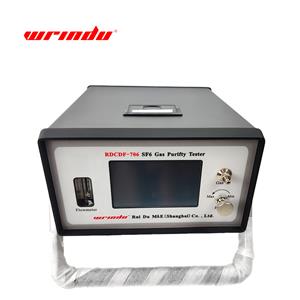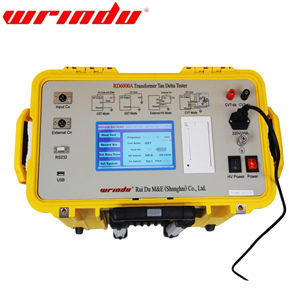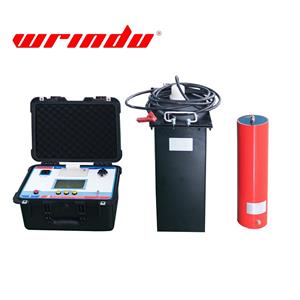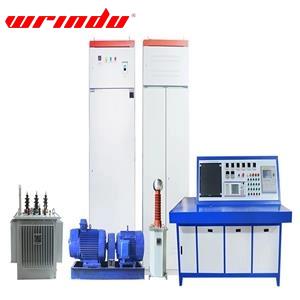Do you know about these applications of the Primary Current Injector Tester?
A Primary Current Injector is a key tool for testing and troubleshooting electrical equipment in the power industry. It works by controlling and injecting current into the electrical circuit of a device, simulating various operational conditions. It's crucial for testing devices like protection relays, transformers, circuit breakers and hv cables.
What is a Primary Current Injector?
A Primary Current Injector is a device designed to generate high current and inject it into electrical systems to test their performance during on-site conditions. It uses a transformer and controller to generate a controlled current of specific magnitude and frequency.
Applications of Primary Current Injectors
Relay Protection Testing
Relays are used to protect electrical equipment from faults like overcurrent or overvoltage. The injector simulates current changes, allowing technicians to test if relays respond correctly and trigger the appropriate protection actions.
Transformer Testing
During transformer setup or maintenance, the injector simulates load conditions. It helps verify a transformer's current capacity, short-circuit protection, and electrical characteristics of the windings.
Circuit Breaker Testing
The injector simulates normal and fault currents, testing if breakers and switches can disconnect the circuit safely under both regular and fault conditions.
Cable Lines Testing
In cable installation or fault diagnosis, the injector is used to check the insulation, transmission capacity, and fault location of cables. It helps detect issues with cables that may not be visible during regular inspections.
Load Testing of Electrical Equipment
The injector helps perform load tests on various electrical devices. It checks the device’s behavior under different current loads, observing parameters like temperature rise and voltage stability.
How Does a Primary Current Injector Test Transformers?
Connect the Injector to the Transformer
The injector's output is connected to the low-voltage side of the transformer to simulate input current. This setup allows the test to be conducted without affecting the transformer's primary operation.
Set the Test Current
The test current is set based on the transformer's rated current. Initially, a low current is applied to monitor the transformer's basic response.
Gradually Increase the Current
The injected current is increased gradually, observing the transformer's behavior at different levels. Technicians monitor if the transformer experiences overload, overheating, or other issues.
Monitor Output
Output voltage is checked on the high-voltage side of the transformer to ensure it remains stable within the rated value during load conditions.
Overload Protection Testing
The current is set higher than the transformer's rated value to test its overload protection. If the transformer's protection system works properly, it should cut the power or trigger an alert to prevent damage.
How Does a Primary Current Injector Test Cable Insulation?
Connect the Injector to the Cable
The injector is connected to one end of the cable, while the other end is grounded or connected to the equipment being tested.
Set Voltage for the Test
High voltage, typically 1.5 to 2 times of the cable's rated voltage, is applied to test the insulation strength. This simulates high-stress conditions the cable may encounter.
Apply Voltage and Monitoring Leakage
Voltage is applied, and technicians monitor for any leakage or breakdown of the insulation. If leakage or breakdown occurs, it indicates a fault in the cable's insulation.
Post-Test Inspection
After testing, the cable is inspected for visible damage or deformation. Additional tests like partial discharge detection may be used to check for weaknesses in the insulation.
How Does a Primary Current Injector Perform Load Testing?
Connect the Injector to the Device
The injector is connected to the input side of the device being tested (e.g., transformer, motor). This allows current to be injected directly into the device to simulate load conditions.
Sett Load Current
The test current is set according to the device's rated load current. Initially, the current is kept at the rated value, and then gradually increased to simulate higher load conditions.
Inject Load Current
The current is injected, and the device's performance is monitored. Parameters such as voltage, temperature rise, and operational stability are recorded.
Overload Testing
To test the device's ability to handle overloads, the injector provides current higher than the rated load. The device's protection system should activate, preventing damage or failure.
Key Features of RDSL-82-2000A Primary Current Injector Tester
RDSL-82-2000A Primary Current Injector Tester features dual ammeters for monitoring both large and small current ranges. It is equipped with indicator lights and button-operated controls, which keeps simple and easy operation. The product has a rated capacity of 12KVA, with an input voltage of 380V and an input current of 31.5A. It provides an output voltage of 6V and an impressive output current of 2000A. The overall dimensions are 600mm in length, 430mm in width, and 760mm in height. Additionally, our company can customize products with different specifications and special functions based on user requirements.
Click here to learn more about RDSL-82-2000A Primary Current Injector Tester.
Related Articles




